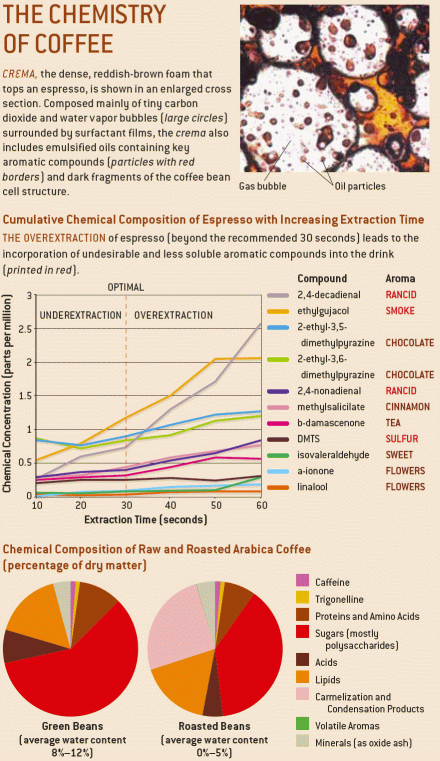Artificial digestion
Kopi Luwak is the most expensive coffee in the world ($250+ USD per pound). On the islands, a marsupial eats the ripest coffee cherries, then natives
collect the beans from its excrement. Apparently, the fermentation of the coffee beans in the animal's digestive system breaks down much of the
bitter and foul tasting components, making what most that have tried it regard as the best coffee in the world.
So, the question here is how do we do this in the lab, instead of paying big money or picking through feces.
To break it down, let me start by asking which are the paramount digestive processes affecting the beans as they pass through the animal's gut?
In espresso extraction, proper technique aims to minimize the bitter substances extracted along with the good stuff, as can be seen in the attached
graph. Additionally, most of the relevant taste chemicals are identified in the tables in the lower halves of these pages:
Bitterness:
http://www.coffeeresearch.org/science/bittermain.htm
Acidity:
http://www.coffeeresearch.org/science/sourmain.htm
Aroma:
http://www.coffeeresearch.org/science/aromamain.htm
Clearly, we want to minimize the bitter ones (with the exception of caffeine, of course), while minimally impacting the aroma ones.
[Edited on 9-10-2005 by Quince]

\"One of the surest signs of Conrad\'s genius is that women dislike his books.\" --George Orwell
|